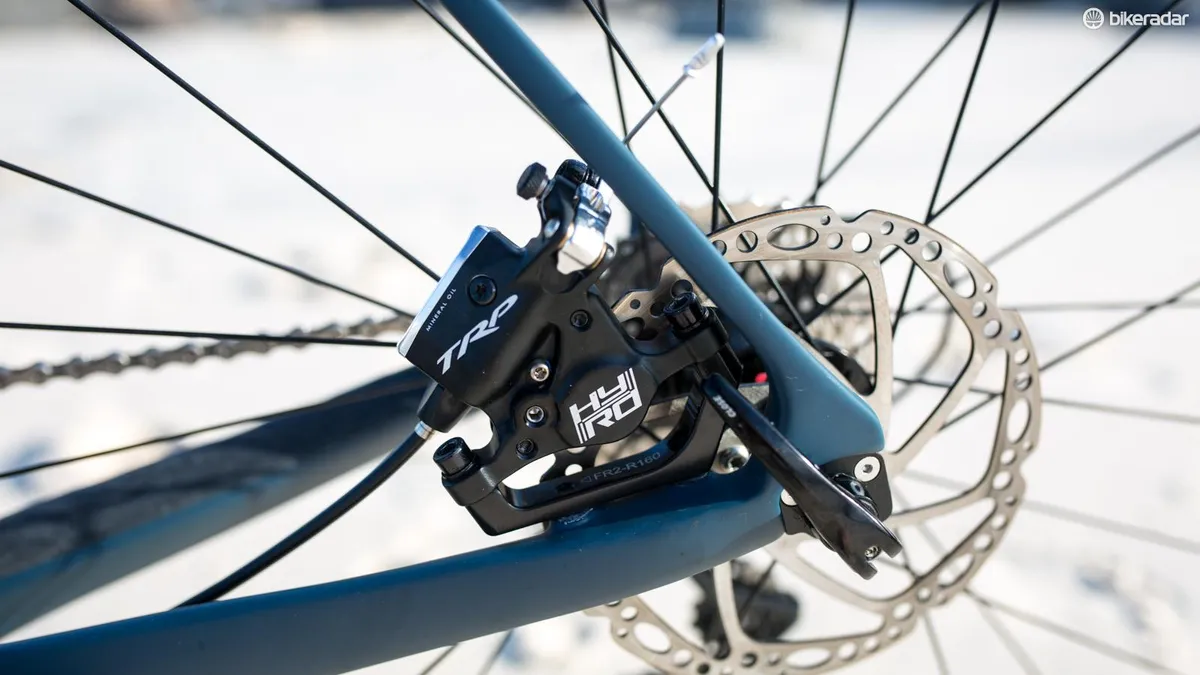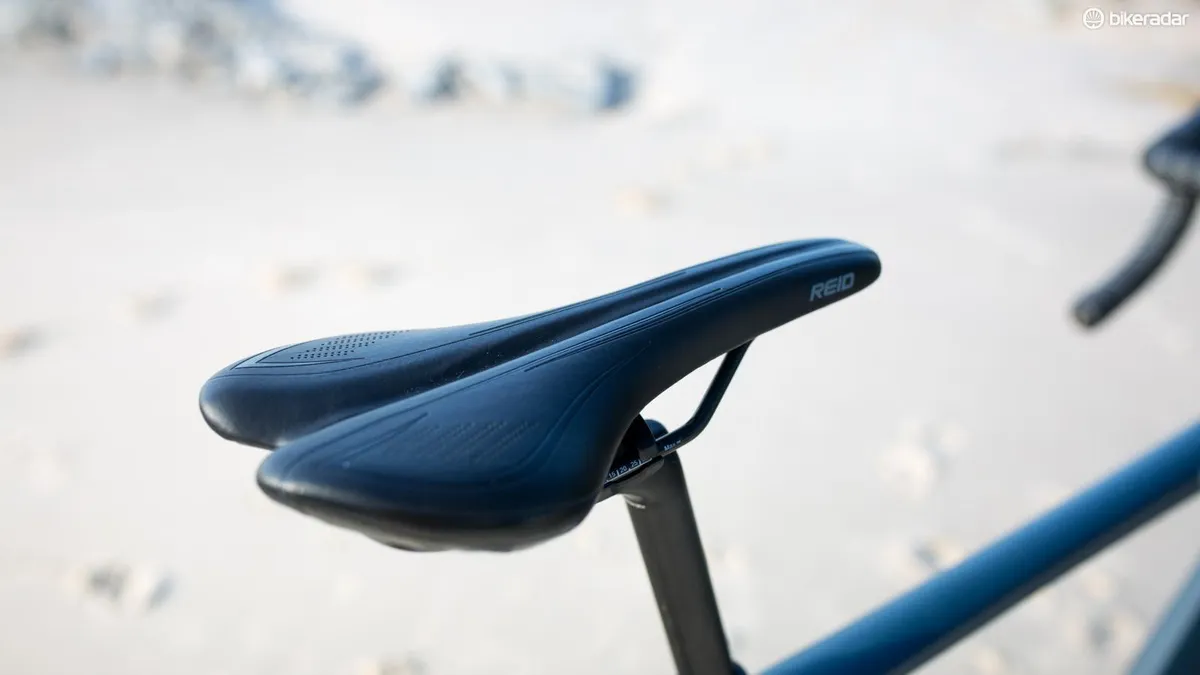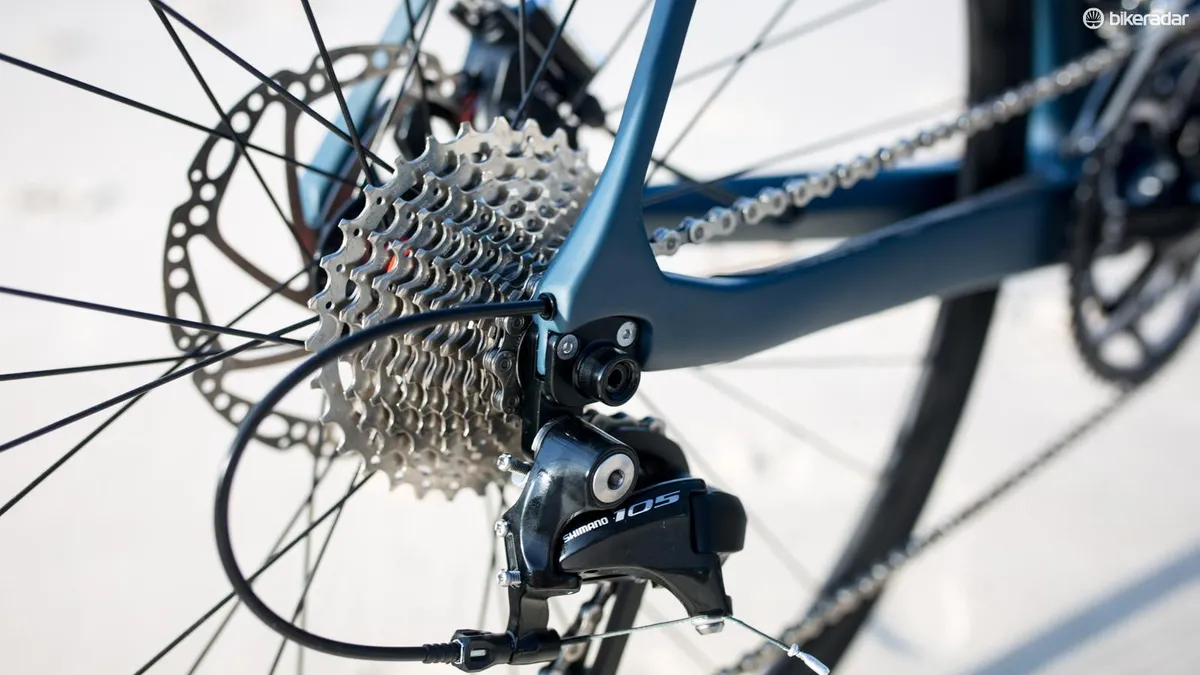Up to this point, Australian consumer-direct brand Reid has been best known for producing bikes designed to hit a price point, sometimes at the cost of performance, but in the past couple of years, the brand has put a serious emphasis on improving finishing and overall quality. The fruits of its labour are apparent in the brand's first performance carbon fibre frame, the Vantage Comp 1.0.
This new frame marks a departure from Reid’s bread and butter of alloy fitness, commuter and lifestyle bikes, to targeting those who may be looking to tackle their first century or possibly even pin on a number.
It’s clear that the Aussie brand has done its homework too, with the build quality and components being on trend with what the big brands are doing — but it’s not without its quirks.
At £999 / $1,700/ AU$1,700 the Vantage Comp is also Reid’s most expensive ride to date — and no that's not a typo, it's evenly priced in Australia and the US. With a full carbon frame, Shimano 105 drivetrain front and rear, thru-axles and hydraulic disc brake calipers, this bike is punching well above its weight in terms of build with big brand bikes featuring similar spec costing well over $2,000.
Too good to be true?

There is no doubt that the Vantage Comp marks a change in focus for Reid and a quick survey of the bike cements its intent. First and foremost the Vantage Comp is built around a more race oriented geometry than any of its previous models. It’s not quite as aggressive as something like a Specialized Tarmac or a Trek Madone, but the steeper 72.5-degree head angle and 544mm top tube proved for a slightly longer and lower position than the endurance oriented geometry of a Trek Domane or Specialized Roubaix.
The handlebars also have quite a long reach and the seat post, with a lot of setback, stretches you out that little bit further, too.
The frame itself is made in Taiwan using T700 carbon fibre and it’s clear from the first pedal stroke that Reid has a dynamic character. The tube shapes vary throughout the frame, including pencil thin bowed seat stays, and the ride quality has been tuned to be stiff where you want it and relatively soft where you don’t.
The muted matt colours aren’t likely to rouse oohs and ahhs from passers-by, but the internal cable routing adds to the clean aesthetic of the bike. Not a problem unique to Reid, but I did notice the cables rattling inside the frame over big bumps and particularly on rough roads.
The bike offers a lively ride in spite of its 9.14kg / 20.15lb weight. When you stomp on the gas, there's no detectable flex at either end of the bike tracks even when the frame is loaded.

By no means is the Vantage Comp the most comfortable road bike I’ve ridden in recent months, but that isn’t necessarily a bad thing. It is designed to be a racer after all and a bit of feedback from the wheels offers some insight in to what’s going on down there and provides a bit of connection to the road.
Having said that, it’s no bone rattler either and is perfectly comfortable off the beaten track and away from pristine glassy roads. Through fast descents, breakneck speeds and sharp corners the Vantage offers confidence-inspiring handling and feels well planted on the road. With a full carbon fork and tapered steerer tube the front end is stiff and responsive to steering input. The bike doesn't fight you and only needs moderate pressure to initiate turns and accommodate quick changes in line.

Some of the burdens of both ride quality and stiffness are shouldered by the Alex Rims and Conti Grand Sport rubber. The ADT470 Double Wall Alloy Race wheels are tubeless ready (with tubeless tape and valves) and spin around Novatec Sealed bearing hubs. While neither of these components are showstoppers they are solid performers.
The wheels are stiff and despite my best efforts, including an ill-advised adventure down an extremely washboard dirt road, remain as true as day one. With a 17mm internal rim width, Alex rolling stock spread the 25c tire casing nicely and the Continental Grand Sport rubber finds a good balance between puncture protection and rolling resistance, while also taking care of a good bit of unwanted road feedback and vibration. Reid says the frame can take up to 28c rubber, but I think you could go slightly bigger.
Furthering its confident ride are the disc brakes. While rim brakes have been the norm for some time, discs offer superior power and predictability in both wet and dry conditions.They’ve been the go-to for mountain bikers for many years and are now beginning to catch on on the road, not only for the additional power on offer, but also the superior control.
On the Vantage Comp, Reid has opted for TRP HY/RD calipers. This system is distinctive in that all the hydraulics are contained within the caliper, meaning a standard road brake and shifter can be used at the bars. Despite being physically actuated by a cable, these brakes offer fantastic modulation and a smooth lever pull.

The trouble, however, comes with the frame itself that's designed around the flat mount brake standard and not the calipers, meaning an adaptor is required. At the front, the issue is purely from a cosmetic perspective, but at the rear the extra space occupied by the adaptor makes it damn near impossible to get an Allen key in with the wheel attached and turns adjusting and aligning the caliper a major headache.
Batting well above its average
Considering the price point Reid has hit with the Vantage Comp, it has spent its money wisely and it’s pretty rare to see 12mm front and rear thru-axles. Not only do they stiffen up the wheel to frame connection, and the bike's end to end stiffness, they also make wheel alignment and tightness a non-issue.
However, a small oversight that is bound to cause a fair bit of frustration is the lack of an internal resting dropout on the fork, as seen on most thru-axle forks. So, when replacing the front wheel after cleaning, transport or a puncture there is nothing for the wheel to rest on while you try and align the axle. It’s a fiddly exercise, but with a bit of time could be learned.

Spec’d with a Shimano 105 drivetrain the shifting is flawless as expected, even when combined with the non-series crankset, which shifts quickly and accurately — but not quite as well as the 105 version does.
At the rear, Reid has opted for a massive 11-32T 11-speed cassette with compact 50/34T gearing at the front to allow for miles of range, something I was thankful for grinding up the 25 percent grade that leads up to my house.
Bottom brackets, especially on lower end carbon bikes can be a never-ending source of noisy headaches. A large majority of brands are using Press Fit standards, which are supposed to be lighter and stiffer, but because of sloppy manufacturing tolerances they can often develop extremely annoying and hard to get rid of creaks. Reid however, to my delight, has spec’d the Vantage Comp with a threaded bottom bracket. Yes, it’s a bit heavier than the press fit alternative, but in the majority of cases a squirt of grease will silence any noise coming from the BB and they’re easier to work on too.

As far as touch points go, the well-padded saddle is bearable, but likely something that will be swapped early on. As I previously mentioned, the bars offer quite a long reach and suited my riding position well, but for those newer to riding, the bike would benefit from a smaller drop.
Bang for your buck

Reid has continued to impress me with its latest crop of bikes. It has put the ‘cheap bikes’ behind it, instead aiming to produce bikes that punch well above their price tag.
The Vantage Comp has its quirks, the lack of internal dropout on the fork and choice to spec non flat-mount brakes on a flat mount designed frame, for example, while the rattling cables are downright annoying once you notice them.
But for this money it’s hard to find a disc-equipped carbon road bike that will compete. It’s not going to be for everyone and the more aggressive geometry may prove too much for those looking for an upright ride, but if you’re looking for a more aggressive ride and don’t have much to spend, the Vantage Comp 1.0 won’t disappoint.










